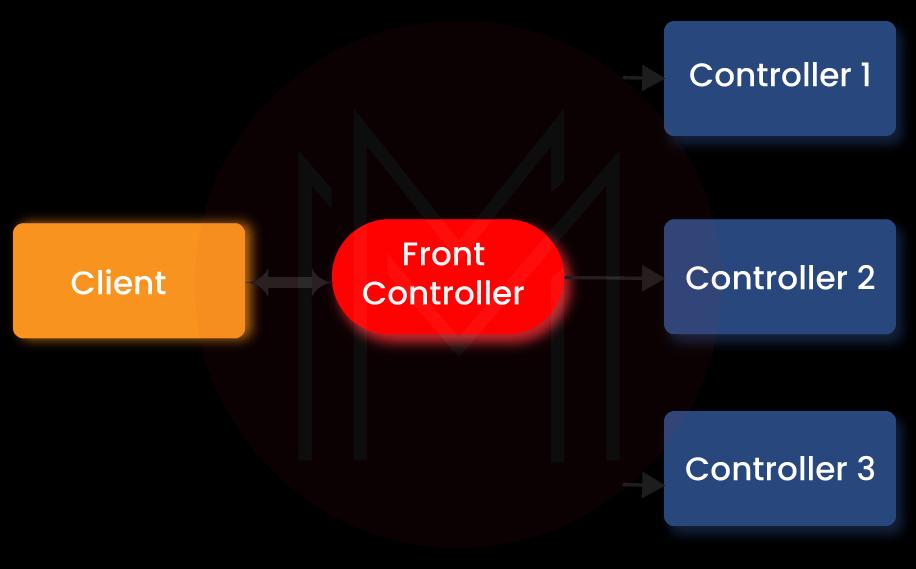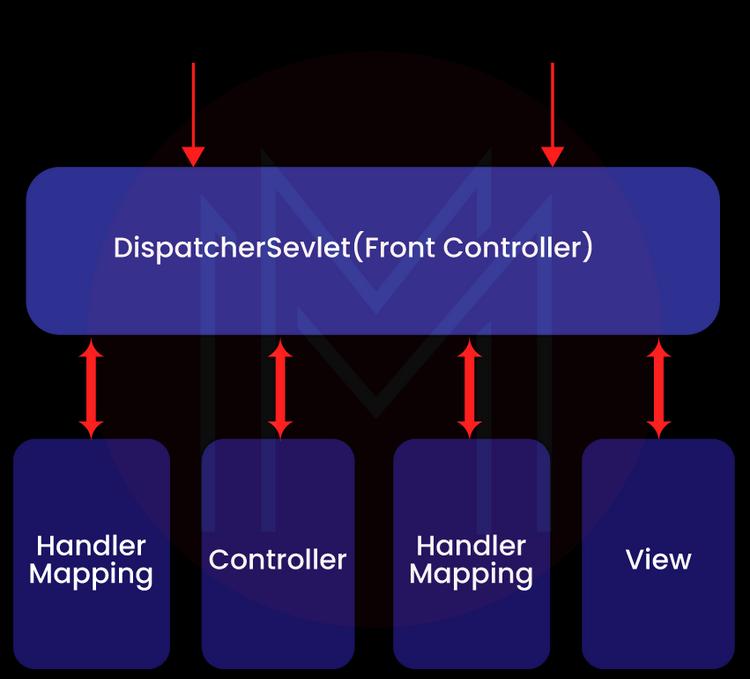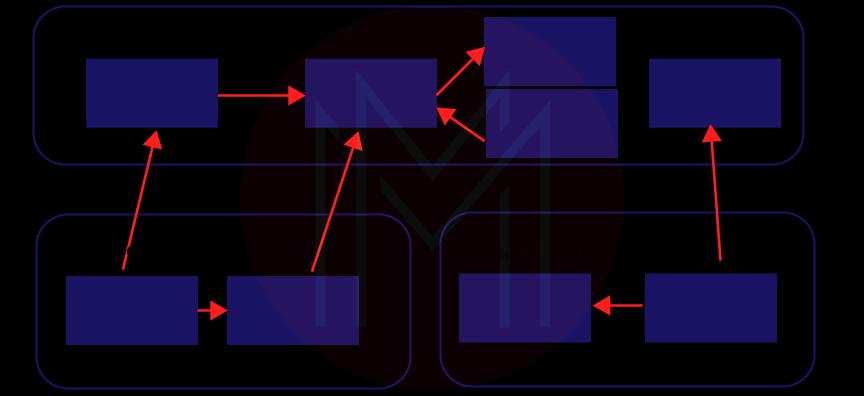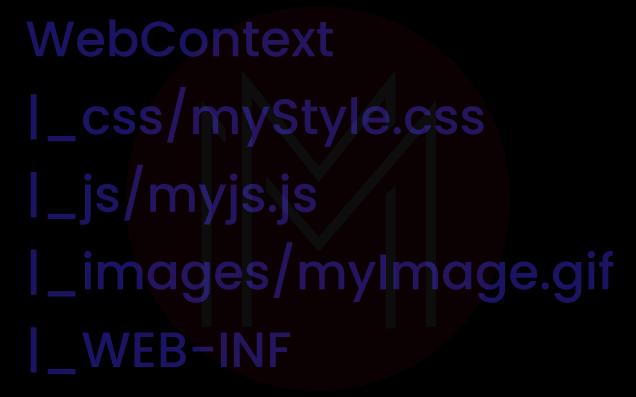- Home
- Blog
- Java Spring
- Spring MVC Interview Questions

- Spring Boot Interview Questions
- Spring Boot vs Spring MVC
- Spring Cloud Tutorial
- Spring Tutorial
- Java Spring Interview Questions
- What is Bean in Java Spring
- Spring Cloud Interview Questions
- Spring Boot Tutorial
- Spring Boot Projects and Use Cases
- Spring Boot Installation on Windows
- Java Spring Projects and Use Cases
- Java Spring Tutorial
Spring MVC is a lightweight framework used to develop web applications. Here, MVC stands for Model View Controller, which is generally an implementation pattern. The front Controller or DispatcherServlet is one of the crucial components of the Spring MVC framework. This component is used to receive user requests and process them with the help of controllers.
In this blog post, you can find spring MVC interview questions and answers from spring architecture to spring annotations. Mainly, this blog post packs the spring MVC interview questions and answers for experienced and advanced-level learners. No wonder you can directly jump into the following sections based on your expertise level.
Top 10 Frequently Asked Spring MVC Interview Questions
- What is the use of Spring MVC?
- What are the Various Modules of the Spring Framework?
- What is Internal Resource View Resolver?
- Mention Features of the Spring MVC Framework.
- List the Benefits of the spring MVC Framework
- What is the use of the @Init binder annotation?
- What is the role of the File in Spring MVC?
- Why are Validations performed in the Spring MVC Framework?
- How would you Validate form data in Spring MVC?
- Compare: @autowired and the @inject Annotations
Spring MVC Interview Questions for Freshers
1. What is Spring MVC?
Spring MVC is a lightweight and open-source framework. MVC is the short form of Model View Controller. It is a design pattern used to create web MVC applications. Usually, the traditional design pattern follows the Input-Process-Output pattern. But, MVC design follows the Controller – Model –View pattern. Here, the Model deals with data. It is used to store database records. The view is used to present the model data to users. And the Controller uses the business logic to process the user inputs.
| If you want to enrich your career and become a professional in Spring MVC, then enroll in "Spring Boot Training" - This course will help you to achieve excellence in this domain. |
2. What is the use of Spring MVC?
With the spring framework, Java developers create effective and scalable web applications. This framework uses many useful techniques, such as Aspect-Oriented Programming (AOP) and dependency injection, to build powerful web applications. Spring MVC uses many annotations for various purposes.
3. What are the Various Modules of the Spring Framework?
- Spring Core
- Spring ORM
- Spring AOP
- Spring web Flow
- Spring web MVC
- Spring Application Context
- Spring web DAO
| Related Article: Spring Tutorial |
4. What is an IoC Container?
The main thing about IoC containers is that developers have no role in managing objects and their lifecycles. It is the core of the Java framework used to create objects. IoC container also supports configuring and integrating the objects' dependencies. We can also manage the lifecycle of the objects with help of the IoC container.
5. What do you mean by Spring Interceptor?
Know that spring interceptor has three main methods such as prehandle ( ), afterCompletion ( ), and postHandle ( ). It is essentially a class used to intercept a request. This is because spring MVC allows intercepting web requests for pre-handling as well as post-handling. It is also used to extend the class. It can also implement the HandlerInterceptor interface.
6. What is Dispatcher Servlet in Spring MVC?
Dispatcher Servlet is the Front Controller used in Spring MVC web applications. This front Controller accepts all incoming requests to the web applications. After that, it decides which Controller can effectively manage the requests. Note that the dispatcher servlet or front Controller is usually integrated with the IoC container.

7. What do you understand by ContextLoaderListener?
It is one of the essential components of Spring MVC. Using this component, we can create root context and load beans. Mainly, it is used to load the middle and data tier beans. These beans are crucial in creating the backend of spring-based web applications. The important thing is that you must declare ContextLoaderListerner in the deployment descriptor. As a result, it listens to events seamlessly.
8. What do you mean by WebApplication Context?
WebApplicationContext usually contains the Servlet context information. So it can easily communicate with the container. You can understand this from the below code.

If you implement the ServletContextAware interface, then Java Bean will use the ServletContext.

It is essential to note that a single web application can have many WebApplicationContexts.
9. What is Internal Resource View Resolver?
This spring MVC framework component helps to resolve view names regardless of the underlying resources. Essentially, it is the default view resolver for the dispatcher servlet class. And it returns an internal resource view too.
10. What do you understand by the Front Controller Pattern?
It is the centralized handler used to control and manage web requests. It accepts all the requests and then processes them. This handler can perform authentication, logging, authorization, etc. With this spring MVC component, we can track requests and also pass the requests to the respective handler.
11. Mention a few Features of the Spring MVC Framework.
- This framework clearly defines roles. For example, consider the dispatcher servlet. It acts as the Front Controller.
- This framework offers high flexibility.
- It allows reusing business codes any number of times
- It offers customization for handler mapping as well as view resolution
- This framework supports JSPs, JSTL, JavaBeans, etc.
12. What do you mean by BeansFactory?
Essentially, BeansFactory is an interface. More to the point, it is a root interface used to access the spring bean container. BeansFactory is implemented by objects. The objects hold many bean definitions. And each bean can easily be identified with a name or identifier.
13. What are the bean scopes supported by Spring MVC?
- Singleton: The scope of this bean definition is a single instance per IoC container
- Prototype: The scope of this bean definition will be any number of object instances.
- Session: The bean definition is an HTTP session
- Request: The bean definition is an HTTP request
- Global-session: Here, the bean definition is a global HTTPS session.
14. What is Multipart Resolver?
Know that there are two multipart resolvers in Spring MVC. The first one is for Jakarta Commons file upload scenarios, whereas another one is for Servlet 3.0 part API. The multipart resolver manages the file uploads in a spring web application.
15. List the Benefits of the Spring MVC Framework.
- The reusability of the spring MVC framework is good
- We can reduce the use of codes through pattern implementations
- It performs declarative transaction management
- It easily integrates with third-party tools
Spring MVC Interview Questions for Experienced
16. What are the critical differences between Request Scope and Session Scope?
The main difference is that the session scope is usually longer when compared to the request scope. Another difference is that request scope objects exist only for the HTTP request. Once the response is given, the scope will be ended. On the other side, session scope objects exist for the entire HTTP session request. Once the scope is over after a request or session, the associated objects will be sent to the trash. And the objects will no longer be available for another request or session.
17. Differentiate Bean Factory with Application Context.
| Bean Factory | Application Context |
| It supports lazy loading | It supports aggressive loading |
| Annotations are not used | Annotations are used |
| It cannot push events to Java Beans | It can move events to Java Beans |
| It instantiates a bean when we call the getBean( ) method. | It instantiates a singleton Bean soon after the container starts. |
| It is implemented by XMLBeanFactory. | It is implemented by ClassPathXmlApplicationContext and FileSystemXmlApplicationContext. It also uses AnnotationConfigWebApplicationContext |
18. How does the flow of Spring MVC happen?
The flow in Spring MVC happens in the following way:
- First, the request received by a web application is forwarded to the Front Controller.
- The front Controller identifies the corresponding Controller that can handle the request. In this regard, the request header plays a vital role in determining the Controller.
- Then, the Controller processes the request with the help of the right service classes
- Once the request processing is over, the Model is sent to the Controller. And the Controller sends the Model to the Front Controller.
- Then, the front Controller finds the view template and then sends the Model to the template.
- Finally, the front Controller sends the view page to the browser to respond to users.

19. What are the uses of @PathVariable and @ResponseBody, and @EnableWebMvc annotations?
- @PathVariable Annotation is used to combine the URI template variables with a controller. Mainly, it is combined with the handler method parameters of the Controller.
- @ResponseBody Annotation converts the return value and then writes the return value into the HTTP response.
- @EnableWebMvc Annotation is used to enable spring MVC in web applications.
20. What are the key differences between @Controller and @RestController?
| @Controller | @RestController |
| Generally, this Controller returns views | It binds @Controller, and @ResponseBody.This Controller returns objects |
| This Annotation is used at the presentation level | This Annotation s used at the class level |
| This Annotation indicates the role of classes | It uses classes to manage the requests of users. That’s why it is used in REST web services. |
21. How will you use Spring MVC tiles?
We can change the layouts of spring web applications with the help of Spring MVC tiles. We can use the same header as well as footer across many pages in the web application. In other words, we can use a single template page to change the layouts. Besides, we can seamlessly integrate web applications with jQuery, Bootstrap, and other popular technologies with the support of spring MVC tiles.
22. What is the use of the @Init binder annotation?
This Annotation helps to customize the requests received by a controller in a web application made by Spring MVC. The requests are formatted as well as controlled in the way they are defined in the controllers. Using @Init binder, we can identify the right methods to initialize the webdatabinder.
23. What is the use of @RequestMapping Annotation?
This Annotation is used to request a specific pattern for the controllers in the MVC framework.
24. What is the role of the File in Spring MVC?
The file is used as the deployment descriptor file in the spring web applications. This file maps the URL paths with Servlets. Note that this file includes filters along with listeners.
25. Compare: Model, ModelMap, and ModelandView
| Model | ModelMap | ModelandView |
| It is an interface | It is a class and implements a map interface. It also has a map method. | This is the final interface |
| It is a container for model attributes | It supports generating model attribute names | It is a container for both ModelMap in addition to a view object. |
| It is used to pass values to views | It is used to pass a collection of values | It is used to pass values to a view in a single return. |
Advanced Spring MVC interview Questions
26. Why are validations performed in the Spring MVC Framework?
Validations are generally performed to control the inputs sent by users. We can use Bean Validation API for this purpose. By using this API, we can validate web applications effectively. Moreover, Bean validation is nothing but a Java specification with which we can validate a number, length, etc.
27. How will you validate a user’s input within a number range?
We can use the @min Annotation and @max Annotation to validate a user's input. When it comes to @min Annotation, the user input must be equal to or higher than this value. When it comes to @max Annotation, the user input must be equal to or lesser than this value.
28. Can we use multiple configuration files in Spring MVC?
Yes. We can use many configuration files. Also, we can increase the modularity by using many configuration files.
29. How will you load the Root Application Context in Spring MVC?
We can load the root application context using ContextLoaderListener. It is important to note that the context must have the resources such as services, infrastructure Beans, etc. The below image shows how to root application context interacts with servlet contexts.

30. How would you Validate form data in Spring MVC?
We can validate a form data using @valid Annotation. We use hibernate validator API to validate data. We also use this validator to validate Beans in the spring framework.
31. What are the differences between @RequestParam and @PathVariable annotations?
| @RequestParam | @PathVariable |
| It is used to access the values of the query parameters. The parameters can be DefaultValue, Required, Name, or Value. | It is used to access values from the URI templates. |
| We can retrieve request parameters using this Annotation | We can retrieve path variables using this Annotation |
| It is not encoded since it extracts values from queries. | It is encoded since it extracts values from the URI path. |
32. What is the difference between @Controller and @Repository annotations?
@Controller represents the controllers in the MVC architecture. It is used to annotate classes at the presentation layer. @repository Annotation deals with data storage, data retrieval, and search behavior.
33. What is the key difference between ClassPathxmlApplicationContext and AnnotationConfigApplicationContext?
AnnotationConfigApplicationContext allows you to load application contexts with the help of the Java configuration class.
ClassPathxmlApplicationContext enables you to load application contexts with the use of Spring XML.
34. How can you place your static files, such as CSS, JS, and HTML, in a Spring MVC application?
If you use a traditional java web application structure, you can put the static files in the following order.

For example, suppose you want to reference the CSS file, then you can frame the link as below
<link rel="stylesheet" href="<%request.getContextPath()%>/css/mystyle.css">35. Compare: @autowired and the @inject Annotations
| @autowired Annotation | @inject Annotation |
| This Annotation is spring-specific. We can use this Annotation for auto-wiring in the Spring MVC framework. | This Annotation is a standard annotation used for dependency injection. |
| The ‘Required’ attribute is a must for this Annotation | The required attribute is not needed for this Annotation |
| The default scope is a Singleton | The default scope is the Prototype |
| Refactoring must be done when you change frameworks | No need to refactor when you change frameworks |
| You can use @qualifier Annotation if there is any issue. | You can use @named Annotation if there is any issue. |
Most Commonly Asked Spring MVC FAQs
1. What is Spring MVC used for?
Spring MVC is used for creating dynamic and scalable web applications. It creates web applications based on model view controller patterns.
2. What is the difference between spring MVC and Springboot?
Spring MVC uses the loosely coupled architecture to build web applications. Spring Boot is used for developing different applications, whereas Spring MVC is used for creating web applications and restful web services. On the other hand, spring boot embeds with HTTPS servers like tomcat.
| Related Article: Spring Boot vs Spring MVC |
3. Is spring MVC widely used?
Spring MVC is widely used for building dynamic web applications.
4. Which Model is used in spring MVC?
Spring uses the MVC model to develop web applications. MVC stands for Model, View, and Controller. Note that MVC is an implementation standard.
5. What are the dependencies used in Spring MVC?
Spring Framework Offers two types of inject the dependency: the ‘By Constructor’ and ‘By Setter’ methods.
6. What is POM xml in Spring MVC?
POM refers to Project Object Model. It is the XML file that stores information about a project and configuration details. It acts as the descriptor for mavenised projects. Using the POM xml file, you can specify the dependencies to spring.
7. Is spring MVC and REST API the Same?
No. They are not the same. Spring MVC is a framework. REST is the architecture used to transfer resources. Spring MVC works with REST to offer API support for the effective implementation of applications. The controllers in spring can handle HTTP requests seamlessly.
8. What do you mean autowired in Spring MVC?
Autowiring plays a crucial role in developing applications with few configuration codes and less developing time. It is one of the vital features of spring used to wire JavaBeans automatically. It eliminates the need for elements ‘constructor-arg' and 'property' in the bean configuration file.
9. What is the significance of @repository Annotation?
This Annotation denotes the component used as the repository to store and retrieve data.
10. Are singleton beans thread-safe in the spring MVC framework?
No. They are not thread-safe in the spring MVC framework.
| Related Article: Spring Boot Interview Questions |
Tips to Clear Spring MVC Interview
Answer with Examples: Whenever you answer your questions, you prefer to add examples. This will help to exhibit your practical knowledge to the interviewers. Also, it will show how you have applied your expertise to develop an application or solve a problem. Remember that when you quote your past projects or works, always use the ones that came up with positive results.
Brief Technical Concepts with Simple Words: Always use simple words when describing a technical concept. It will show your communication and presentation skills to the interviewers in a positive way. So, non-technical people on the interview board will quickly grasp what you are saying.
Show yourself as a Visionary: Always remember to convey your long-term and short-term goals to the interviewers. It will help to show yourself as a goal-oriented person and a person full of confidence and enthusiasm.
Project yourself as a problem solver: Completing a task or software project is not a simple deal, which no one will deny. You may go through any challenges before reaching the final point of completion. On this note, you can share your experiences in solving issues in your projects or studies. You can brief the interviewers on how you have used your analytical skills to solve the problems. It will clearly show them your qualities, such as resilience and perseverance.
Conclusion
On a final note, we hope that the spring MVC interview questions and answers helped you in a great way. Remember, spring MVC is one of the excellent frameworks for building spring web applications. Well! you must have gone through MVC architecture, Front Controller, annotations, JavaBeans, validations, rest controllers, and many more. If you are interested to learn more about the spring MVC framework, you can learn Spring Boot Course Offered by MindMajix and improve your knowledge. It will support you to bag your dream job and succeed in your career.
 On-Job Support Service
On-Job Support Service
Online Work Support for your on-job roles.

Our work-support plans provide precise options as per your project tasks. Whether you are a newbie or an experienced professional seeking assistance in completing project tasks, we are here with the following plans to meet your custom needs:
- Pay Per Hour
- Pay Per Week
- Monthly
| Name | Dates | |
|---|---|---|
| Spring Boot Training | Jan 10 to Jan 25 | View Details |
| Spring Boot Training | Jan 13 to Jan 28 | View Details |
| Spring Boot Training | Jan 17 to Feb 01 | View Details |
| Spring Boot Training | Jan 20 to Feb 04 | View Details |

Madhuri is a Senior Content Creator at MindMajix. She has written about a range of different topics on various technologies, which include, Splunk, Tensorflow, Selenium, and CEH. She spends most of her time researching on technology, and startups. Connect with her via LinkedIn and Twitter .















